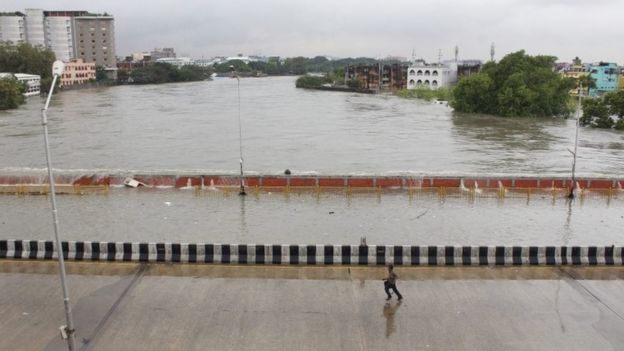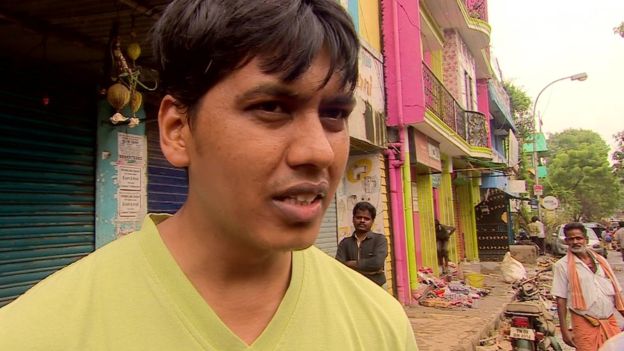December 5, 2015
CHENNAI, TAMIL NADU, INDIA: It's the first time in two days that Loganathan Mari is entering the ground floor of his modest two-room house in Chennai's Jafferkhanpet area.

Loganathan Mari says he has lost everything after water flooded his modest home
December 5, 2015
CHENNAI, TAMIL NADU, INDIA: It's the first time in two days that Loganathan Mari is entering the ground floor of his modest two-room house in Chennai's Jafferkhanpet area.

Loganathan Mari says he has lost everything after water flooded his modest home
On Tuesday, as the level of the Adyar river flowing nearby rose following heavy rains, the ground floor of his house was submerged, forcing Mr Mari, his wife, son, daughter-in-law and grandson to head to the roof.
"There was water everywhere," he recalls. "All around us. We are lucky to be alive."
But it's still hard for him to hold back his tears as he surveys the damage inside the house that he'd built with his meager savings, nearly two decades ago.
Much of the furniture is damaged beyond repair, as is his tiny television set and refrigerator.
"It's all gone, all gone," he sobs as his children try to console him.
Across Chennai, many other families are also busy counting their losses.
The Antonys live in the middle class CID neighbourhood.
"There was five feet of water in our house," Mrs Antony tells me.
"Everything was floating – the fridge, washing machine, even our gas cylinders."
'Chest high'
For two days Chennai's resembled a city of islands, with many neighbourhoods surrounded by or submerged in water.
"The water was chest high," one student, Sridhar, tells me.
We are just by the Adyar river, which flows through the city. Even though it's stopped raining, the current is still dangerously swift.
On the opposite bank, the roofs of a couple of houses are visible above the water level.
By where Sridhar and I are, the river has risen so high it's hard to determine where it ends and the road begins.

Non-stop rain for nearly a week has brought the city to a standstill
A team of National Disaster Relief Force (NDRF) personnel trudge by wearily, carrying a boat between them, distinct in their bright orange uniforms.
"We are no longer rescuing anyone, that part of the operation is over," says SS Guleria, the NDRF's operations director general.
"Now the main focus is to make sure the people affected get food, water and medicines."
But that is proving to be a challenge. For the past couple of days, air force and army helicopters have dropped supplies in some areas.
"It's never going to be enough," says Naveen, another local resident.
"Each drop is enough for 10-20 people. And there are so many who are in need."
That soon becomes evident.
Shortages and queues
A volunteer group drives up in a pick-up truck with huge vessels of steaming rice and lentils.
Within seconds, a knot of people form around them, expanding rapidly as more people pour in from the surrounding lanes.

Local resident Naveen says there simply isn't enough relief material being supplied
The volunteers fight to create a semblance of order but give up and start ladling the food out.
The fittest and strongest get to the food first, the old and feeble hang back, unable to push through.
On Thursday, the markets opened but there are already shortages of essential items.
"There's hardly any milk available and when it is, it's almost double the price," one woman says as she hurries past with a bag full of vegetables.
Long queues form at petrol stations, which too have opened for the first time since Tuesday. While many people bring in their vehicles, there are many others who are filling up petrol in plastic water bottles, to take back to stranded vehicles.
"God knows when all of this will end," the student, Sridhar, says.
"We used to look forward to the rain. Now we are terrified of it."
Courtesy: BBC News
















































































































